Affiliate links on Android Authority may earn us a commission. Learn more.
It's finally happening! Android's upgraded Find My Device network is here!
Published onApril 8, 2024
- Google’s upgraded Find My Device network is finally rolling out worldwide, starting with the US and Canada.
- The network can use Bluetooth proximity tracking to allow billions of Android devices and other Find My Device-compatible accessories and trackers to locate each other.
- Third-party Bluetooth trackers from Chipolo and Pebblebee will launch in May, and more from Eufy, Jio, Motorola, and others will follow by the end of the year.
Android’s Find My Device network has long been overdue for an update that makes it as competitive and useful as Apple’s Find My network. Google announced this update in May 2023 but then got stonewalled by Apple not releasing a critical update for iPhones that would allow them to track unwanted trackers. That stonewalling finally has ended, as Google has officially announced that the all-new Find My Device is rolling out to Android devices worldwide, starting with the US and Canada today.
The upgraded Find My Device network for Google’s Android
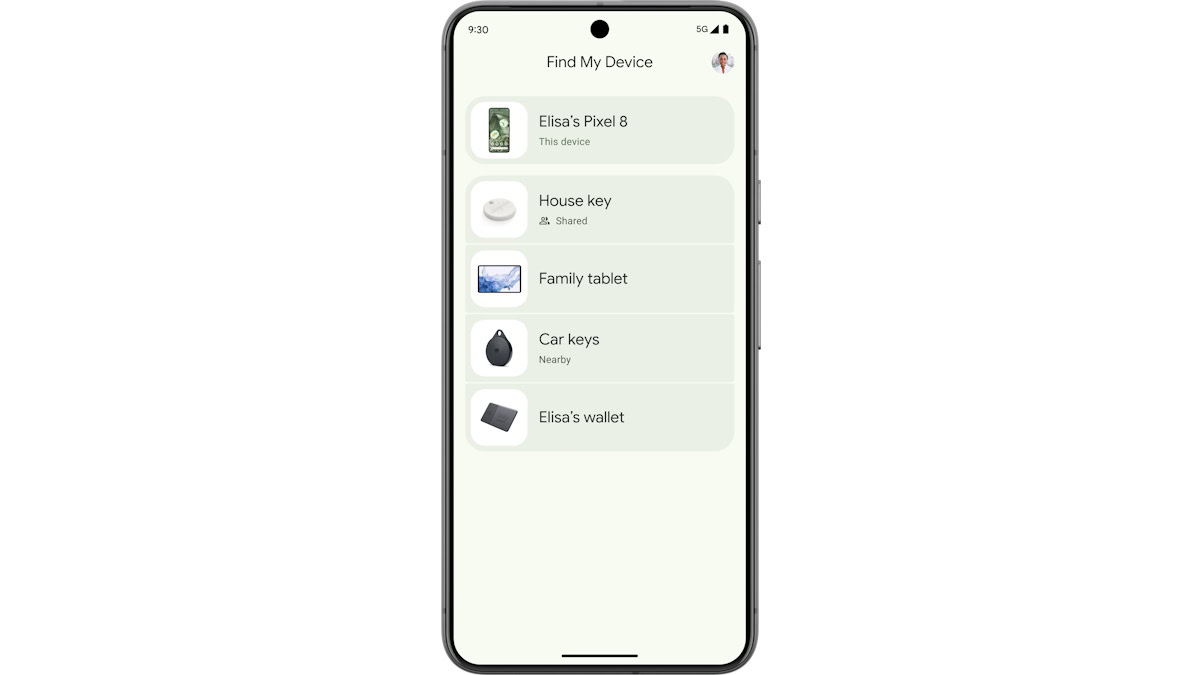
As promised last year, Android users are now finally able to leverage the omnipresence of Android devices to locate other nearby devices, even if these lost devices are offline. Android 9 Pie devices with Google Play Services and other products compatible with the Find My Device network can now help locate each other via Bluetooth proximity.
This is similar to how Apple’s Find My network works, but the sheer popularity of Android devices supercharges the Find My Device network to be at least as powerful as Apple’s network, if not more.
How does the upgraded Find My Device work?
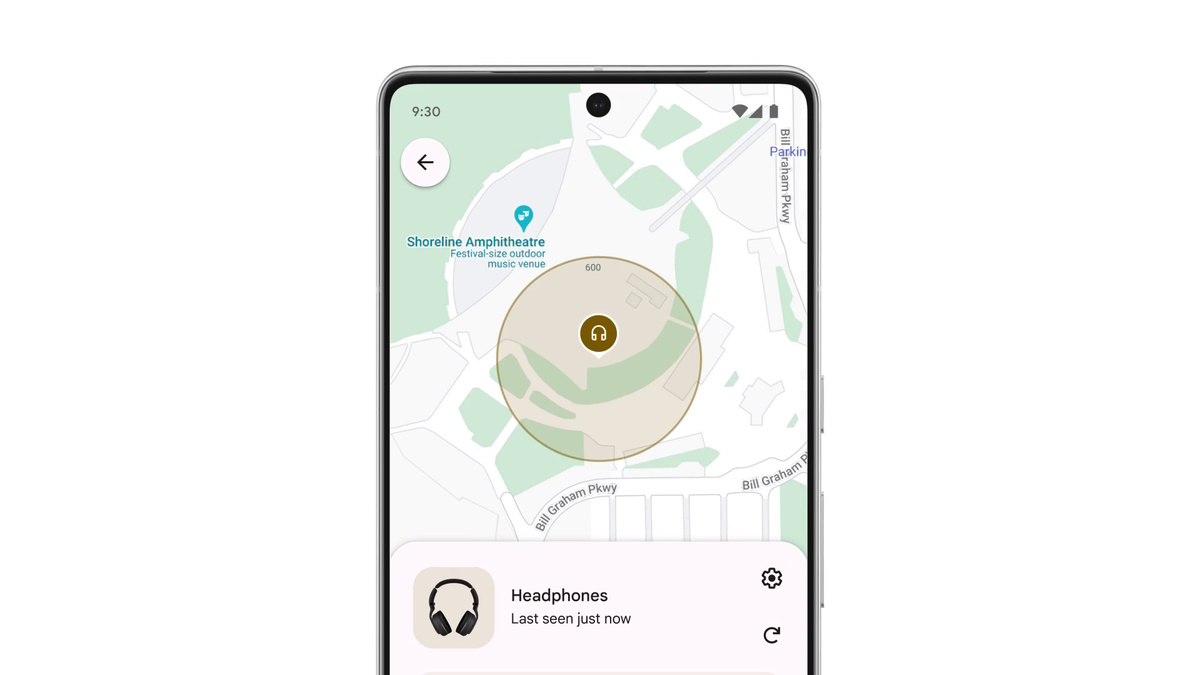
The new Find My Device network relies on location crowdsourcing through Bluetooth proximity. When Android devices consent to participate in the network, they can pick up encrypted location data of nearby lost items, including other Android devices participating in the network and Find My Device-compatible Bluetooth trackers. All nearby participating devices will contribute to the aggregated location of the lost item, allowing it to be tracked and found.
On devices with specialized hardware, like the Pixel 8 and Pixel 8 Pro, owners will be able to find their devices even if they are powered off or the phone’s battery is dead.
Data safeguards in the Find My Device network
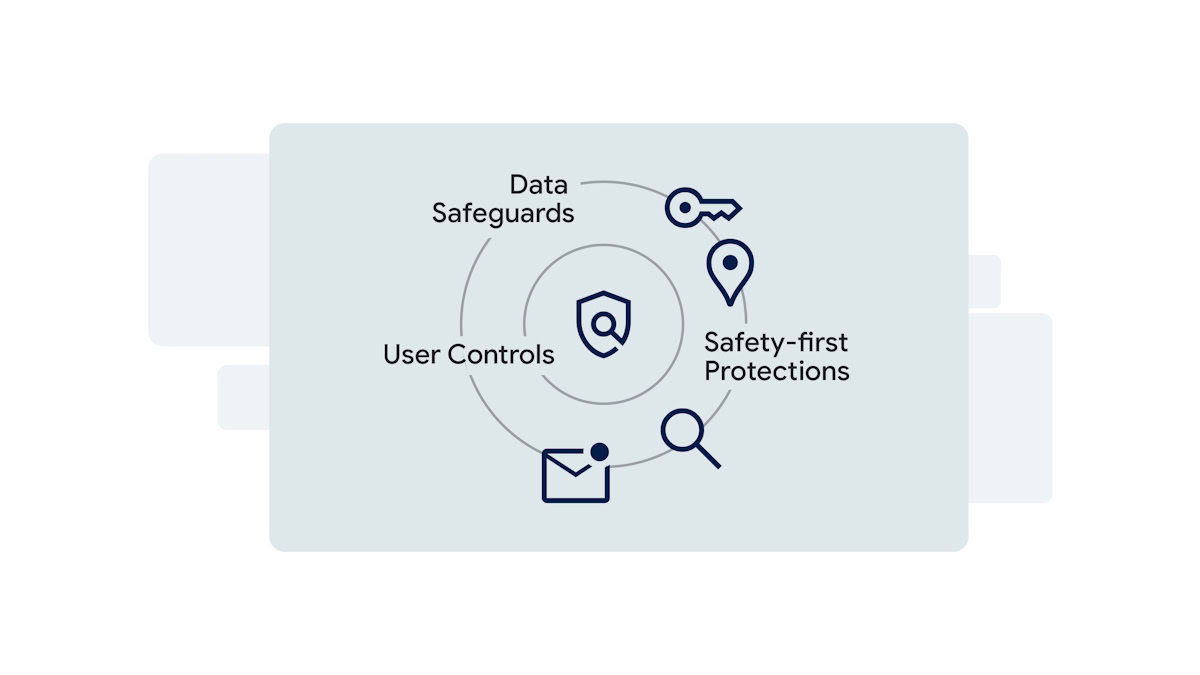
The new Find My Device network thrives on plurality, so it has many data safeguards in place.
When Android devices participating in the network report the location of a nearby Bluetooth tag, Google says the location is end-to-end encrypted using a key that is only accessible to the Bluetooth tag owner (and anyone else with whom the owner has shared access). Only the Bluetooth tag owner can decrypt and view the tag’s location. This location is not available to Google or the Android devices from which this location data was harvested.
Google says it also cannot identify the owners of the nearby Android devices that provided the location data. No information about the nearby Android devices (that contributed to the location data) is shared with the owner of the lost item either.
The upgraded Find My Device network requires multiple nearby Android devices to detect a tag before its location is reported to the tag owner.
Google says that the upgraded Find My Device network requires multiple nearby Android devices to detect a tag before its location is reported to the tag owner. This way, the network works best in busier locations while prioritizing safety from unwanted tracking near private locations. For less busy locations, the last known location and Nest finding features (mentioned below) are better ways to locate items.
Further, if a user has chosen to save their home address in their Google account, their Android device will not contribute crowdsourced location reports when it is near this address.
The network also builds in rate limiting and throttling. There is a limit to the number of times a nearby Android device can contribute a location report for a particular Bluetooth tag, and there is a throttle on how frequently the owner of a Bluetooth tag can request an updated location for the lost tag.
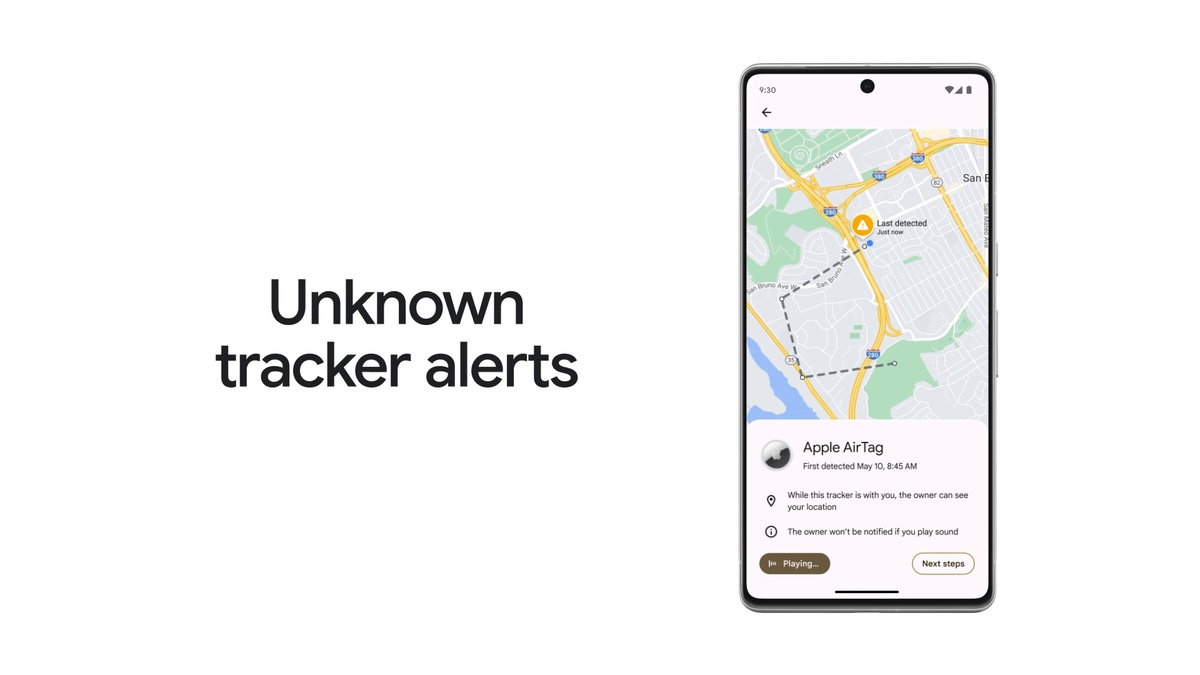
As mentioned in the beginning, the Find My Device network will present unwanted tracker alerts to Android and iOS users if it detects the user being tracked through a Find My Device-compatible tag.
Android users can choose whether and how their devices participate in the Find My Device network. The default setting is to contribute to aggregated location reporting, but users can opt to contribute to non-aggregated location or withdraw from the network.
Opening up Find My Device to third-party Bluetooth trackers
Google is also opening up the Find My Device network to third-party Bluetooth trackers. Compatible tags from Chipolo and Pebblebee are slated to arrive in May, and more tags are coming from manufacturers like Eufy, Jio, Motorola, and more later in the year.
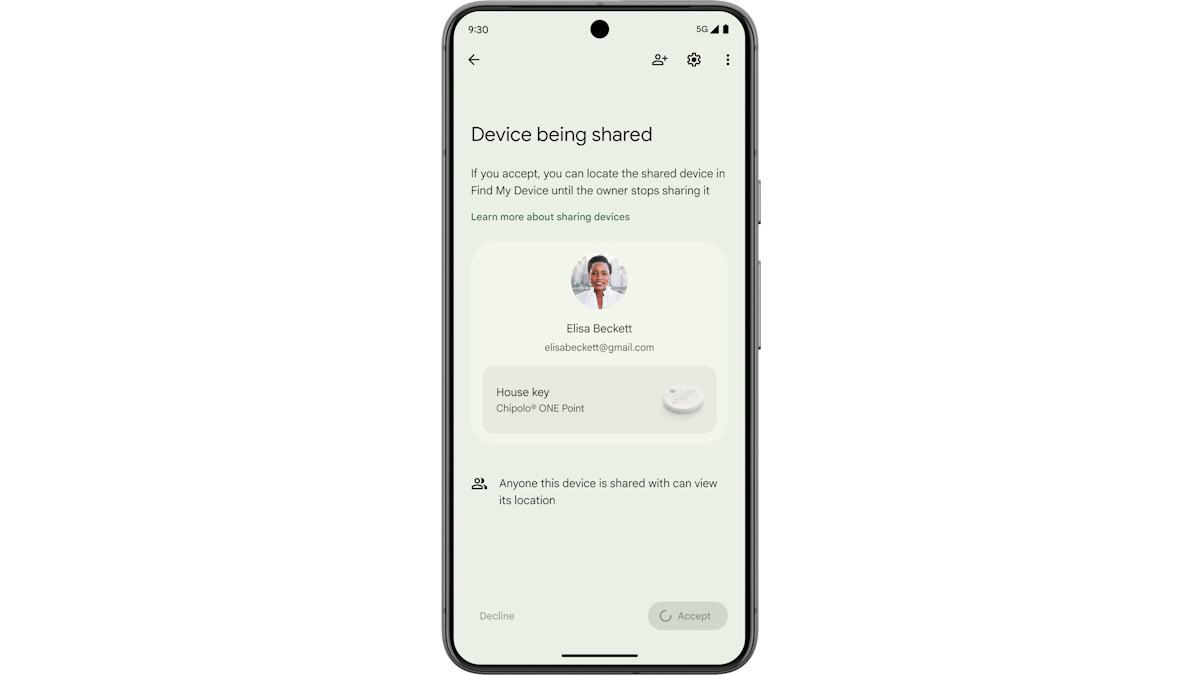
Google says you can also share accessories with your friends and family so that everyone can locate them.
Proximity tracking through the “Find nearby” button and Google Nest devices
The newly upgraded Find My Device network can be accessed through the Find My Device app. The upgraded app experience has a new “Find nearby” button that can help you find your lost device when you are close to it.
Google doesn’t specifically mention that this feature needs UWB tech, and the animation that Google has presented is devoid of directional arrows and takes a more proximity-based approach, so we’re optimistic that it works with Bluetooth trackers, too. We’ve confirmed with Chipolo that their trackers are Bluetooth-only and do not come with UWB tech so far, and we’re waiting to hear back from Pebblebee.
Additionally, if you lose a device at home, you can use the Find My Device app to show its proximity to your Google Nest devices.
This is an important part of the puzzle as it maintains the network’s effectiveness without compromising your safety and privacy.
What do you think of Android’s Find My Device network upgrade? Has it rolled out to you, and did you try it out? Let us know in the comments below!